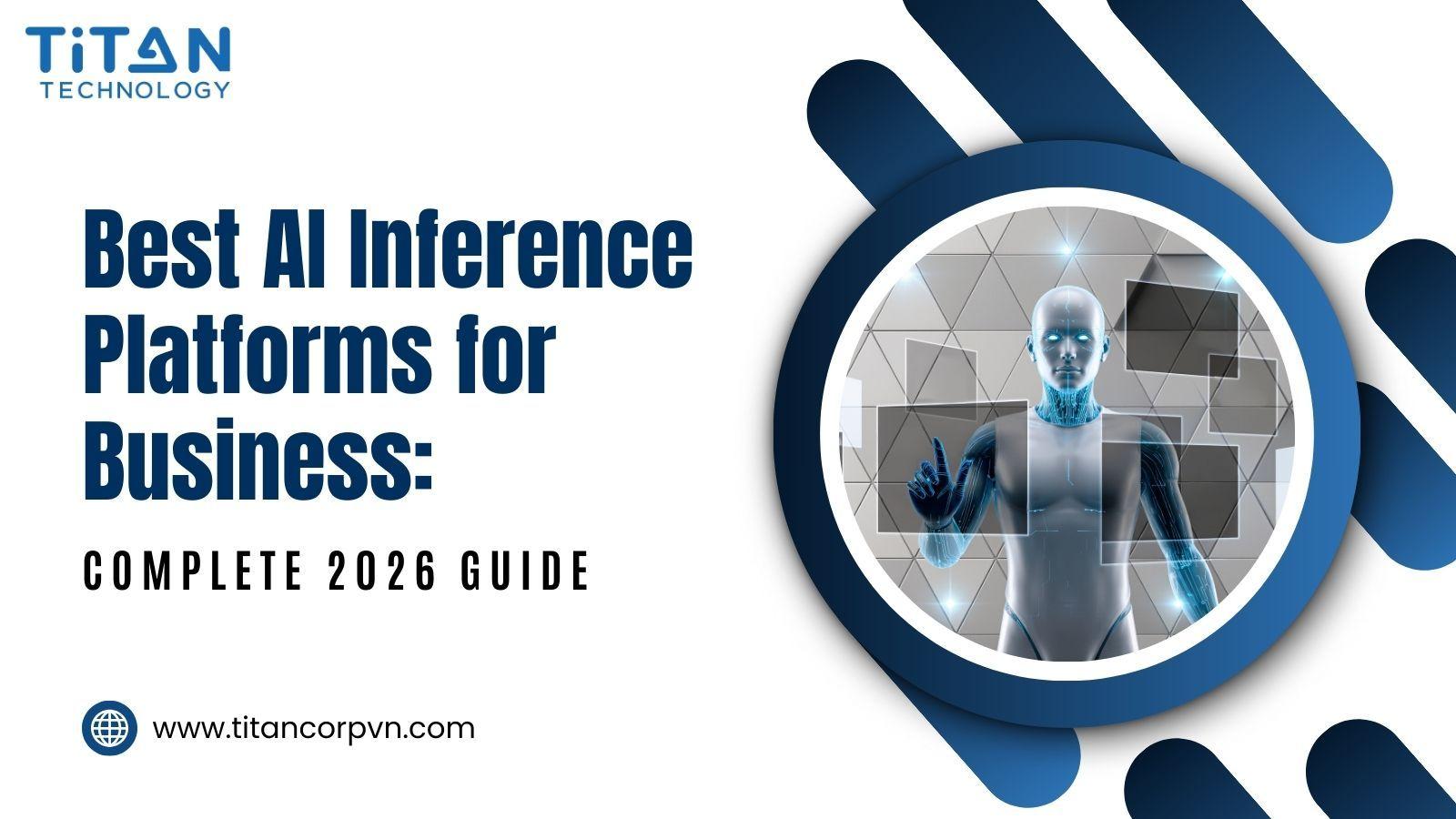Summary
Outsourcing is now a strategic driver of innovation and agility, not just a cost-saving measure.
Onshore, nearshore, and offshore models each offer unique advantages in terms of control, collaboration, and scalability.
The global IT outsourcing market is expected to exceed $ 777.8 billion by 2025, reflecting its growing strategic importance.
The right model depends on factors such as project complexity, regulatory requirements, and time-to-market.
Many enterprises adopt hybrid approaches that combine onshore oversight, nearshore collaboration, and offshore scalability.
Long-term success comes from strong partner alignment, mature governance, and transparent communication.

In today’s digital-first economy, outsourcing has moved far beyond its origins as a cost-cutting tactic. It’s now a critical enabler of innovation, faster product delivery, and access to specialized skills—especially in areas like AI, cloud-native development, and cybersecurity.
As IT systems become increasingly complex and internal talent remains scarce, global enterprises are turning to external partners to remain agile. According to Statista, the IT outsourcing market is expected to exceed $777.8 billion by 2025, reflecting its growing importance in long-term digital strategies.
But not all outsourcing models are created equal. Onshore, nearshore, and offshore each offer unique strengths and trade-offs depending on your project’s scope, regulatory demands, budget, and team structure.
At Titan Technology Corporation — a trusted software outsourcing partner based in Vietnam — we’ve spent over a decade helping clients across the U.S., Europe, and APAC navigate these decisions.
In this article, we’ll break down each model’s pros, challenges, and best-fit scenarios, and share how to choose the one that best aligns with your strategic goals in 2025.
Understanding the Three Outsourcing Models
1. Onshore Outsourcing – Local Talent, Maximum Oversight
Onshore outsourcing refers to working with vendors located in the same country as your business. This model offers maximum control thanks to shared time zones, language, and cultural context. Legal compliance, data security, and intellectual property protection are also easier to manage under domestic laws, making this a preferred choice for projects involving sensitive data or regulatory complexity.
However, that control comes at a cost. Software development rates in high-income countries, such as the U.S., U.K., and Australia, can range from nearly $100 per hour, as outlined by Upstack, making onshore outsourcing the most expensive option. Compounding this challenge is the ongoing talent shortage, especially for in-demand skills such as AI, cloud computing, and cybersecurity. According to a recent Gartner survey, nearly 80% of CIOs plan to grow their IT headcount in 2024, yet many still report major difficulties in hiring qualified tech professionals.
As a result, many enterprises rely on onshore outsourcing for high-stakes initiatives that demand tight collaboration or local legal adherence, while offloading more scalable tasks to nearshore or offshore teams.
2. Nearshore Outsourcing – Seamless Collaboration, Smarter Spending
Nearshore outsourcing involves engaging teams in nearby countries — typically within a 1–3-hour time difference. A U.S. company may work with developers in Mexico or Colombia, while a French firm might partner with teams in Poland or Romania. The main advantage? A nearshore model offers the cultural affinity, language alignment, and real-time collaboration benefits of onshore — but at a significantly reduced cost.
According to HatchWorks, nearshore software development rates are, on average, 46% lower than onshore rates, offering substantial cost savings without compromising on talent quality or collaboration potential. This pricing advantage, combined with geographic proximity and cultural alignment, makes nearshore an attractive option for businesses seeking both efficiency and agility.
This blend of proximity and affordability makes nearshore ideal for fast-paced, collaborative projects such as SaaS rollouts, UX-heavy product design, or agile sprints. In fact, Deloitte’s 2024 Global Outsourcing Survey highlights how many organizations are adopting blended models — using onshore resources for strategy, nearshore resources for integration, and offshore resources for execution.
At Titan, we’ve seen nearshore models excel for clients who need tight feedback loops between their internal teams and outsourced developers — especially when speed-to-market is critical.
3. Offshore Outsourcing – Scale Fast, Spend Smart
Offshore outsourcing enables companies to access highly skilled global talent while reaping the benefits of significantly lower labor costs. Countries like Vietnam, India, Ukraine, and the Philippines have become top offshore hubs, offering deep technical expertise across emerging domains such as AI, DevOps, cloud-native development, and cybersecurity — all at a fraction of the rates in the West.
According to InApps, average hourly development costs in these regions range from $20 to $60, making offshore partnerships especially attractive for businesses looking to scale quickly without overstretching budgets. That said, offshore models require thoughtful execution. Time zone gaps and cultural differences necessitate mature processes, structured communication, and robust governance — but when implemented effectively, the payoff is substantial.
Among the rising stars in this space is Vietnam, a country experiencing rapid growth in its tech sector. Backed by over 300 IT-focused universities and training centers — including Hanoi University of Science and Technology (HUST), Vietnam National University, and FPT University — Vietnam now produces approximately 57,000 IT graduates annually, fueling a robust and future-ready talent pipeline.
At the center of this ecosystem is Titan Technology Corporation, headquartered in Ho Chi Minh City. With a decade of experience delivering complex software solutions to clients across the U.S., Europe, and the APAC region, Titan combines global delivery standards with deep local expertise. For organizations seeking an offshore partner that combines cost efficiency with engineering excellence, Vietnam and Titan offer a strategic advantage.
Comparison: Onshore, Nearshore, and Offshore Outsourcing Models
After exploring the individual strengths and limitations of onshore, nearshore, and offshore outsourcing models, it’s clear that each offers unique value depending on the context of your project. While one model may excel in communication and collaboration, another may offer unmatched scalability or cost advantages. The key is to evaluate them not in isolation, but side by side — aligned with your goals, resources, and operational maturity.
The table below provides a high-level comparison of advantages, disadvantages, and cost-effectiveness. This snapshot is designed to help decision-makers quickly assess which model best fits their needs — whether they require real-time oversight, regional integration, or global delivery at scale.

Keep in mind: the “right” model isn’t always just one. Many organizations today adopt hybrid outsourcing strategies, blending these models across different workstreams to strike a balance between agility, talent access, and budget efficiency.
Making the Right Choice — Strategic Considerations Beyond Cost
Choosing between onshore, nearshore, and offshore outsourcing is rarely a binary decision. It’s a strategic exercise in aligning the delivery model with your product roadmap, internal capabilities, and the risks your business can afford to take.
Begin with the project's complexity. If you're developing a data-sensitive healthcare platform or building a fintech solution that requires adherence to strict regulatory standards, proximity and local legal familiarity matter. Onshore or nearshore partners often make sense in these cases, where compliance and co-creation are non-negotiable.
On the other hand, if you’re building a well-defined mobile application, automating internal processes, or scaling up cloud infrastructure, offshore partners can bring both speed and specialized talent at a competitive rate—assuming your team can manage across time zones and cultural differences. Offshore also suits product maintenance, QA automation, and migration tasks where clearly scoped execution outweighs the need for real-time collaboration.
Budget should always be contextualized with quality expectations. While offshore options provide maximum cost savings, the trade-off must be carefully evaluated. For mission-critical applications or highly iterative builds, even subtle communication delays or misalignments can erode cost advantages. In contrast, nearshore setups often deliver strong ROI by balancing affordability with cultural fit and communication fluidity.
Time-to-market also plays a decisive role. For companies operating in fast-moving sectors like SaaS or e-commerce, the ability to run multiple development cycles in parallel—using “follow-the-sun” offshore teams—can significantly accelerate launch timelines. That said, if daily feedback loops are essential to your delivery rhythm, then nearshore or onshore setups may help avoid friction.
Lastly, consider the maturity of your internal processes. Teams with well-established Agile practices, clear documentation habits, and robust product ownership are often better equipped to integrate remote offshore teams effectively. In contrast, organizations just beginning their digital transformation journey may benefit from the closer oversight and cultural proximity that nearshore or domestic teams provide.
Partner Fit: A Decisive Factor in Outsourcing Success
No outsourcing model—regardless of how cost-effective or theoretically efficient—can compensate for a poor vendor match. The strength of your development partner is often the true differentiator between a project that scales and one that stalls.
When vetting partners, go beyond technical resumes. Examine their past client outcomes, communication protocols, delivery methodologies, and their willingness to align with your internal team’s workflow. Transparency and responsiveness are often more critical than a dazzling tech stack.
Contracts and expectations should be mutually clear and understood. A fixed-price scope might work for small, execution-heavy projects, but for dynamic builds, agile contracts with milestone-based delivery often produce better results. Pay attention to SLAs and how the partner handles change requests and risk escalation—these are good indicators of maturity.
Security and compliance must be integrated from the outset. Particularly if you’re dealing with user data, financial systems, or proprietary algorithms, ensure the vendor has documented policies for encryption, IP protection, and regulatory frameworks like GDPR or HIPAA. Certifications like ISO 27001 or SOC 2 aren't just nice-to-haves—they're table stakes in many industries.
Finally, consider starting small. A pilot project enables both parties to test the waters, validate working relationships, and establish trust before scaling into multi-year, multi-squad engagements. It’s a pragmatic way to minimize risk while accelerating onboarding.
Why Titan Technology Corporation?
In today’s crowded outsourcing market, selecting the right partner means more than comparing hourly rates — it’s about trust, alignment, and proven delivery. At Titan Technology Corporation, we bring over a decade of experience helping global businesses — from SaaS startups to Fortune 500 enterprises — scale intelligently through tailored outsourcing strategies.
Headquartered in Vietnam, one of Asia’s fastest-growing tech ecosystems, we combine the cost efficiency of offshore delivery with the quality standards and communication fluency expected by Western clients. Our teams are not only highly skilled in next-gen technologies — from cloud-native platforms to AI-powered systems — but also trained in agile delivery, DevSecOps practices, and cross-functional collaboration.
What sets Titan apart isn’t just talent — it’s our partnership mindset. We don’t drop code into Jira and disappear. We integrate deeply with your product and business teams, adapting to your culture, tools, and feedback cycles to ensure seamless collaboration. From aligning business goals to navigating time zones, compliance frameworks, or iterative releases, we operate with full transparency and accountability.
Our clients trust us with more than deliverables — they trust us with digital transformation, go-to-market velocity, and innovation at scale. And we deliver — every time.
Conclusion: Make Outsourcing a Competitive Advantage — Not Just a Cost Center
In 2025 and beyond, outsourcing is no longer just an operational tactic — it’s a strategic lever for innovation, speed, and resilience.
The right outsourcing model depends on your business context: whether you need real-time collaboration (nearshore), maximum control (onshore), or scalable delivery and technical specialization (offshore). But success is never just about location — it’s about alignment, execution, and trust.
As companies face rising demand for digital products, shrinking local talent pools, and tighter budgets, hybrid outsourcing strategies — which blend onshore, nearshore, and offshore models — are quickly becoming the new norm. However, choosing the right model and partner can make all the difference between accelerated growth and stalled progress.
At Titan Technology Corporation, we help you navigate this complexity with clarity — offering strategic outsourcing solutions designed for agility, quality, and business impact. Whether you’re launching a new platform, modernizing legacy systems, or scaling globally, we bring the global talent, local insight, and execution discipline you need to succeed.
Ready to define your ideal outsourcing strategy? Contact us today and unlock the power of global delivery done right.



